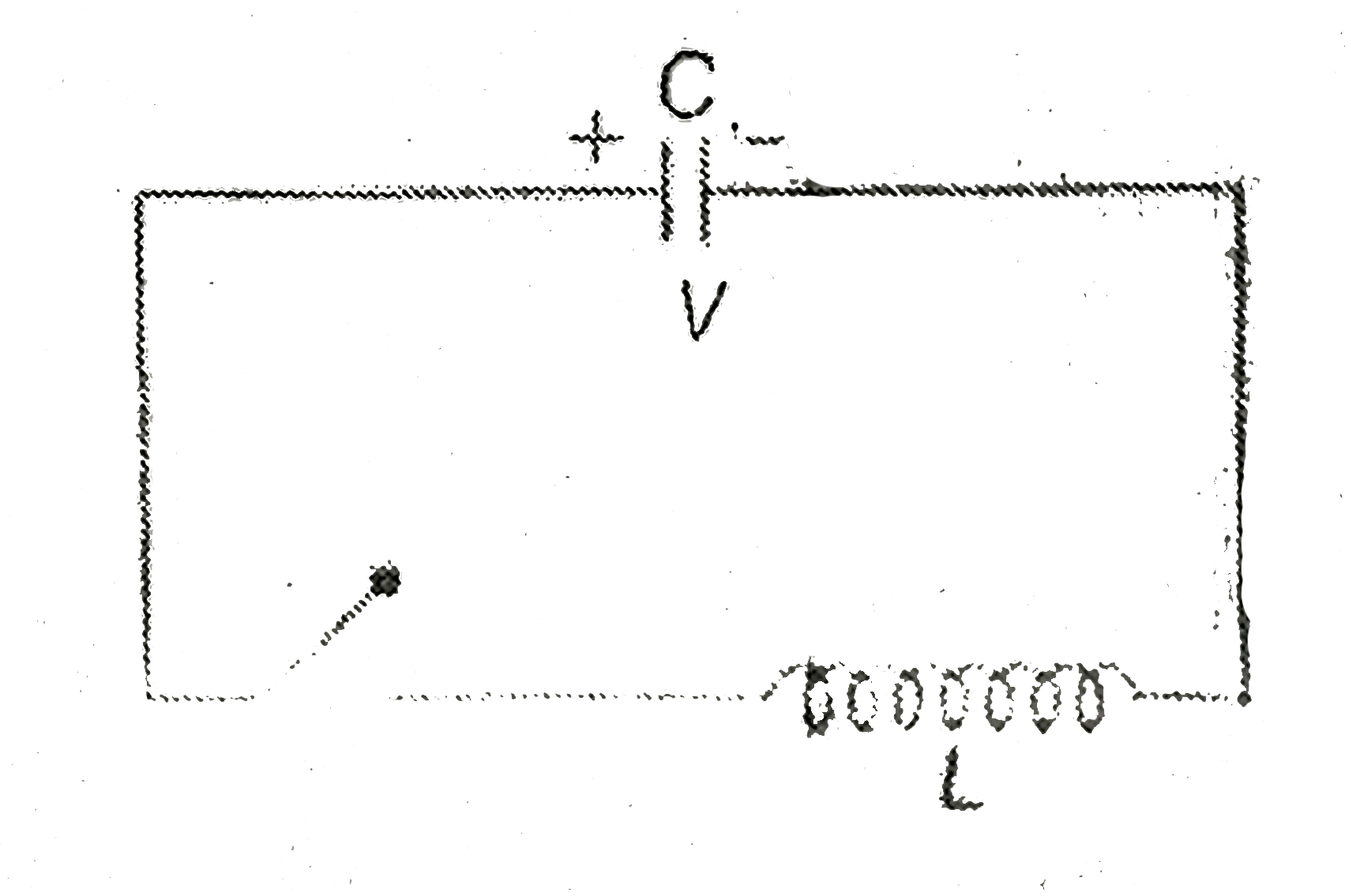A capacitor C is charged to a potential V by a battery. It is then disconnected from the battery and again connected with its polarity reversed to the battery
0.5CV2
CV2
2CV2
None of these
The correct Answer is:c
The battery needs to supply 2CV charge to reverse the polarity. Energy stored remains same hence work done by the battery
(Wb=(2CV)V=2CV2) is lost as heat in recharging.
Topper's Solved these Questions
- ELECTROSTATIC POTENTIAL AND CAPACITANCE Book:MODERN PUBLICATIONChapter:ELECTROSTATIC POTENTIAL AND CAPACITANCE Exercise:Competition file (ASSERTION REASON TYPE QUESTIONS)
Explore 8 Videos
- ELECTROSTATIC POTENTIAL AND CAPACITANCE Book:MODERN PUBLICATIONChapter:ELECTROSTATIC POTENTIAL AND CAPACITANCE Exercise:Competition file (MATCHING TYPE QUESTIONS)
Explore 3 Videos
- ELECTROSTATIC POTENTIAL AND CAPACITANCE Book:MODERN PUBLICATIONChapter:ELECTROSTATIC POTENTIAL AND CAPACITANCE Exercise:Revision Exercises (Numerical Problems)
Explore 25 Videos
- ELECTROMAGNETIC WAVESBook:MODERN PUBLICATIONChapter:ELECTROMAGNETIC WAVESExercise:CHAPTER PRACTICE TEST
Explore 14 Videos
- MAGNETISM AND MATTERBook:MODERN PUBLICATIONChapter:MAGNETISM AND MATTERExercise:CHAPTER PRACTICE TEST FOR BOARD EXAMINATION
Explore 16 Videos
Similar Questions
There is a capacitor with capacitance C, charged up to a potential difference of V. It is disconnected from the battery then both plates are connected to each other by a metal wire. How much heat will be dissipated?
View SolutionA parallel plate capacitor of capacitance C is charged to a potential V by a battery . Without disconnecting the battery , the distance between the plates is tripled and a dielectric medium of dielectric constant 10 is introduced between the plates of the capacitor . Explain giving reasons , how will the following be affected :
charge on the capacitor
View Solution
Knowledge Check
A capacitor of capacitance 4μF is charged to a potential of 100 V. it is then disconnected from the battery and connected in parallel with another capacitor C2. If their common potential is 40 volts, then the value of C2 is
A2μFB3μFC5μFD6μFA 5μF capacitor is fully charged across a 12 V battery, It is then disconnected from the battery and connected to an uncharged capacitor, If the voltage across the capacitor becomes 3 V then the capacitance of the
A3μFB15μFC25μFD60μFA 8μF capacitor is fully charged across a 12V battery, it is then disconnected from the battery and connected to an uncharged capacitor. If the voltage across the capacitor becomes 3V, then the capacitance of the uncharged capacitor will be
A24μFB20μFC28μFD30μF
A capacitor of capacitnace C is charged to a potential difference V and then disconnected from the battery. Now it is connected to an inductor of inductance L at t=0. Then

View SolutionA capacitor of capacity C1 is charged to the potential of V0. On disconnecting with the battery, it is connected with a capacity C2 as shown in the adjoining figure. The ratio of energies before and after the connection of switch S will be

View SolutionA capacitor of capacity C is charged to a potential difference V and another capacitor of capacity 2C is charged to a potential difference 4V. The charged batteries are disconnected and the two capacitors are connected with reverse polarity (i.e. positive plate of first capacitor is connected to negative plate of second capacitor). The heat produced during the redistribution of charge between the capacitors will be
View SolutionA capacitor of capacitance C is charged to potential difference V and then disconnected from the battery. The air dielectric of capacitor is replaced by another dielectric of dielectric constant K. The fractional decrease in energy of the capacitor is
View SolutionA 5μF capacitor is placed across a 12 V battery. It is disconnected from the battery and connected across a condenser of unknown capacity. The voltage then is found to be 3V. The value of the unknownn capacity is
View Solution

